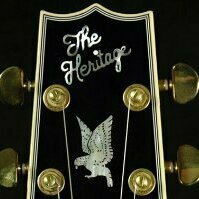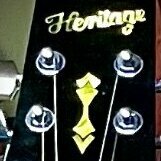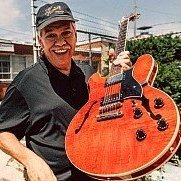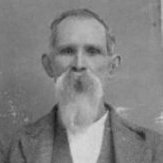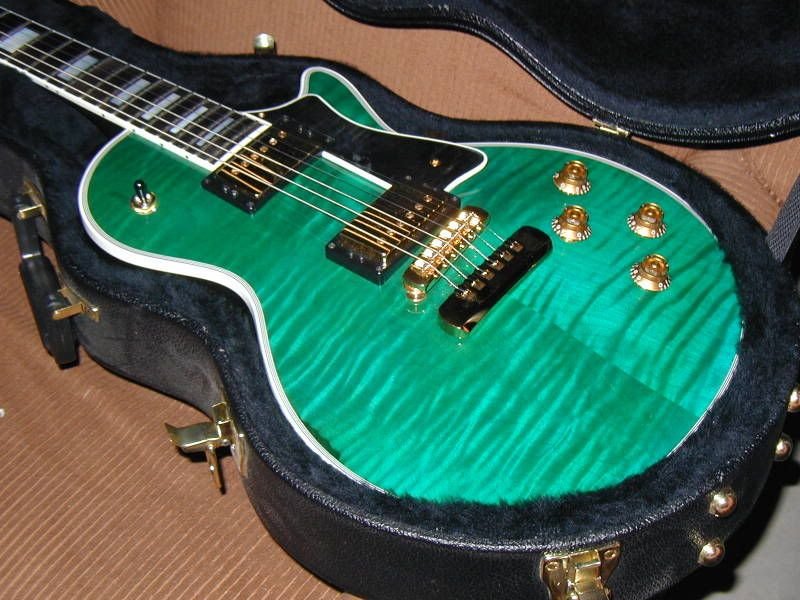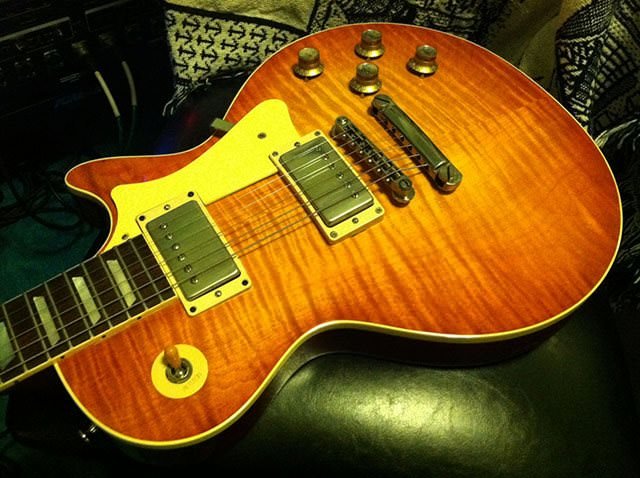Leaderboard
Popular Content
Showing content with the highest reputation since 12/18/25 in all areas
-
Yesterday’s Happy Friday Post from George Metropoulos on Facebook: Happy Friday! The last Friday before Christmas. So, get out there and get your shopping done this weekend. Today I'm here to make a major announcement. After months of deep soul-searching, I've decided to step away from the amp business. There are many varied reasons for this and I'm sure it's the right decision. With this announcement made, here are some points: The whys. Health. This blood pressure is kicking my ass and surely indicates a serious health issue. I need to focus on being more healthy. One way to do that is to eliminate stress. Running a small business is nothing if not stressful. For nearly 25 years now I have given 100% day in day out. I've joked that I sold my soul to the amp industry and everyday it comes to collect. Keeping this business running requires me to overachieve at all times. It demands far, far more than I have the stamina to give these days. When I can't give 100% I can't provide the Metropoulos experience I want each of our customers to have. That wears on me. Metropoulos demands and deserves a tireless force of nature at the helm. The market / industry. Slow sales, part shortages, tariffs. These things affect us everyday. We need to sell about 10 amps per month to cover our payroll and overhead. Since Labor Day, we've taken 5 amp orders. That's unsustainable. I can't promise our crew there is work to do and paychecks coming on Fridays when we don't sell amps. It's not just our little amp company feeling this pinch, the entire industry is down right now. Every week another guitar or amp manufacturer is closing their doors. Demand. I've parsed my observations down to a few sentiments: first, we're building steam engines. The World doesn't really need any more of them. Second, everyone who wants a vintage Marshall, likely has 3 or more already. Anyone who wants a high end tube amp, likely has several of those, as well. Those players are likely plugging into a modeler or digital emulation more often than their beloved tube amps. It's the trend, the technology is exciting, the tone isn't as far off as it used to be and the convenience supersedes the tonal benefits of big, heavy, loud, expensive tube amps. I get it and I don't begrudge anyone! Finances. Not to disclose my finances, but suffice to say I'm not making any money in this business. I've lived like a starving artist, made many sacrifices, poured every dollar made back into the business and operated with zero financial safety net for two and a half decades. I have no savings, no retirement, no health insurance. I followed my passion and have no regrets for that. But, I have to make some money and have access to health treatment. It's time. Mission accomplished. This goes to the literal heart of the matter and sheds light on my character. I'm obsessive and relentless. I started with a self-imposed mandate to separate cranked plexi tone from sheer volume. I obsessed over vintage amps, documented everything I could measure trying to "crack the code" and learn why they sound the way they do. Eventually, the Audio Precision came into my life and I began archiving DNA samples of every old amp that crossed my bench. Armed with this genetic data, I started over from scratch and after several months emerged with the Metro-Plex MK II. At last, authentic plexi tone at any volume. I fulfilled the mandate. The engineering challenge was complete. I believe the Metro-Plex MK II is the best amp of it's kind. Not being boastful or arrogant. Just knowing that I didn't stop until it satisfied my obsessive expectations AND held it's own against the best of the best reference amps I strived to emulate. Here in my 50's I'm at the end of a journey that started as a teenager taking everything apart to see it works. Then taking electronics classes and opening a repair shop. Later, as a professional guitar player, building my own gear and torture testing it on the road. Finally, in the amp business, setting out to create what is now the MK II. Mission accomplished! After decades of pursuit, I'm done. I finished it. I need a new challenge. The How and When. We have less than ten 100 watt amps left to build to fill our orders. All 50 watts are built and the last few have burned in and will ship soon. Over the next 6 weeks we should have filled our amp obligations. Most of the parts bins are nearly empty now. We've been buying only the quantity of things we need to fill the orders. There are some chassis left, but no extra transformers or tubes. If there are parts for a few extra 100 watts, we may build those. But, I'm not going to order 25 expensive pc boards just to build a few amps. Effectively, when the parts are gone, that's it. I'm not interested in building a few amps per month in my basement as a hobby. I've built 100's (possibly 1,000) of amps over my career, I've scratched that itch. Speaker cabinets. Despite our best intentions, we just can not reliably deliver the 2-12 slant cabs that you have placed down-payments for. I've been holding out for this to not be true, hoping I might somehow to will it to be. But, I have to concede. The mandatory elements are just not in place. The money for parts and speakers, the shipping cartons, the payroll and the time needed do not exist. I believe we have 13 down payments for these cabs. I'll begin refunding those weekly until everyone has their funds back. I can not express how sorry I am and how defeating it is to fail on this. I hope that you will accept my apology and I beg your forgiveness. Regarding cabs, all is not lost! Despite my journey coming to an end, Chuck's is ramping up. Our in-house cab artisan will be open for cab business. I'm providing all of my CAD files, old cab data, hardware documentation, parts resources and the tools for Chuck to hit the ground running. I won't speak for Chuck, but I suspect his first product will be a 2-12 slant cab. I'm giving all of my love, support and full endorsement. FX loops. The inventor or the Zero Loss FX loop, Steve Miller will be taking it back and keeping it available. Our omnipotent guru is the obvious and only choice to carry on the legacy of his design. His circuit has found it's way into countless amps. It's OEM in many brands every guitar player knows. It's been copied, knocked off, stolen. Yet, remains ubiquitous. I'll post updates as he gets a website up and running. The Future. What's next for me? Everyone keeps telling me I'll be back. I'll miss designing and manufacturing amps. I don't think so. What else do I have to prove? I've designed and manufactured for my own Metropoulos brand, as well as companies you know well. What I do not aspire to do anytime soon is run a business. I'm exhausted. The administrative workload is relentless and never ending. Eternal crisis and problems to solve. A big commercial building to maintain. Machines that break down. The list of tasks that only I handle for Metropoulos is huge. Most days are triage in the shop. At times, when I have spent time away from the shop....those mission critical tasks are all waiting for me upon my return. What I look forward to moving forward, is to be creative again. Whether playing guitar, recording and mixing music, cooking, writing or just bugging Cris and doing silly stuff to make her laugh. That's where I feel I'm leading with my best traits. It's time to rejuvenate. To prioritize my health. Lower my blood pressure. Cleanse that anxiety induced Cortisol from my system. Gratitude. I want to sincerely thank everyone who has been a part of this journey. Your friendship, support, patronage and enthusiasm for Metropoulos has provided me the opportunity to chase this dream and indulge these passions. I'm eternally grateful. I still recall the names of my first two customers who bought turret board kits from me back in 2003. Chris L and Stan M. Thanks for giving me a chance to get started. I've developed true friendships with some really outstanding people that I'd never had met without the amp biz. You can't place a price on that. In my heart, I'm ready to move on to my next challenge. My next creative adventure. Something I can give my 100% to emphatically. Something that drives me to be the best version of me that I am capable of being. With that, I bid you this single parting wisdom: PLAY LOUD!5 points
-
Character. Honesty. Self-awareness. Forthrightness. Not a lot of these qualities abounding just now. Read every word of his well-written letter. Can wish George only the best, particularly in getting on top of his health!4 points
-
I've heard some of George's amps at PSP. They did sound very good. But I can see how running a business like that can be rough. From Metropoulous to G&L and Hofner. The music busines can be saturated, which makes it tough to continue. It's becoming more common for small to midsized businesses to close up, especially when the owner begins to run into health issues. The amp that I have brought to PSP for quite a few years is a hand built '65 Princeton circuit made by a fellow in Asheville NC, John Schuske. He did repairs and built amps based on classic Fender and Marshall designs for quite a few years. He passed away in August of this year. His partner of 10 years is taking over the business for now. Some years back, I brought my Melancon T to PSP, built by Gerard Melancon in his one person shop in Louisiana. He passed away from cancer back in 2019 at 58! The business died with him. I hope George gets his health under control, and wish him well in his next phase, whatever it might be.4 points
-
I've never been much for chasing the latest hotness in amps. I mean, I still think my (now ancient, but revolutionary <heh> at the time) first-gen Peavey TransTube can sound pretty good. The most 'exotic' amp I own is the Fender I snagged from @LK155 which came complete with the @yoslate funk. Until two weeks ago, I hadn't actually pulled a guitar out of a case in nearly six years. When I did, I DI'd it in to my audio interface and ran it through whatever NI's pseudo-amp thingy is (GuitarRig? Something like that). Amps just don't...move me. All that being said, it bums me out when a small- to mid-sized business folds up. Especially one more-or-less local. Even more especially when there are health challenges. But, being as none of us ever get any younger, I suppose that's just the way life goes. Good on him for realizing health is more important than many realize. Without health, what do you have, right? The thing that really stands out for me--and I'm not and have never been a customer, obviously--is the transparency. I can't count how many threads I've followed over the years where a small luthier, amp house, pedal guy, that dude making analog tape delays somewhere in the Midwest, etc. has taken customers' money and disappeared with nary another word. Dude just lays it out there, and I think that's respectable. Don't know George Metropoulos, but I wish him the best of health and a more-than-decent shot at happiness.4 points
-
https://youtube.com/watch?v=9I8x1qvgtG4&si=dZJp39wWA_JoK1qC Happy Holidays to all!3 points
-
3 points
-
Thankfully I don't have any volume problems with my neighbors, but when I do play out, I usually play one of these two 100-watters. For the type of bands that I play with (mostly blues, funk, fusion), it's easy enough to keep the volume in check with the rest of the guys. That isn't to say that I don't love smaller amps, though, for I do own a few.3 points
-
I love Marshall style amps, and frankly, these amps were at the top of the pile when comes to modern interpretations of the really great Marshalls. He really cracked the code of how to get a great overdriven Marshall sound at a reasonable volume, and that's no easy task. What a loss to the guitar community losing another great company. But he had to do what is good for him, and taking care of his health is the right priority. It broke my heart ready his letter. But I wish him the best. If I didn;t already have a great Marshall style amp, his would be the first I would look at, and I think, as others have said, his amps on the used market will really go up in price.2 points
-
I saw a big furry creature in Alaska running through the woods, carrying a gtr that looked like that.2 points
-
that's a drag to hear & read about, but he's 100% right. Lots of wisdom in that post. Metropoulos amps are a hell of a legacy: those amps will be running & played for years by people who appreciate them. I wish George all the best in the future stress-free life he creates for himself!2 points
-
I'm pretty sure they're Lollars. I've had mixed luck with Lollar P90s as the first few sets I encountered in two different Reverend guitars, were kind of sterile sounding, but the guitar that Kuz sold me (H535 P90) has a great set of Lollar dogear P90s, I love them. I guess it's luck of the draw. A demo of that guitar plugged straight into my Mesa Fillmore 50...2 points
-
2 points
-
The Mean in a neck sounds KILLER DILLER! As a matter of fact, it was the first neck position P90 (in a modern guitar) that I really ever got along with. And I love the Meaner too. All the electric stuff in this song is my SG Special with a Wolfetone Mean and Meaner set...1 point
-
It's all subjective and what your ears personally want to hear but I've had better luck with other P90s. Lollars wouldn't even be in my top 5, but to be fair I think we all play through different amplifiers and that makes a hugh difference. In the video they sound great, much different than what they sounded like in my Special that was just like the one in the video. I have never played Sanford Magnetics P90s, but these sound pretty great at the end of this video... Of the ones that I've owned and liked/loved, I've had GREAT luck with Wolfetone P90s, they are probably my favorite. Throbak makes killer P90s. Another shout out to SHED pickups, his P90s slay! Tyson Tone winds some great P90s! And for raunch, stock Gibson P90s are right up there!1 point
-
1 point
-
I had to laugh when I saw this youtube video title: I'm sure most here are aware Heritage makes killer guitars, and have done for years 😝 They compare a 2025 custom core model to a recent R8 plaintop. It makes sense he bought both, as he needs specimens to R&D pickups I haven't watched this whole thing yet, it's over an hour long. The gtr part starts around 15min in: hopefully the video link works1 point
-
Exactly, haha But in our modern era of social media & human behaviour "evolution" you need to grab people's attention.1 point
-
I thought Heritage has been giving Gibson a run for its money ever since the first few I saw in the mid 1980's!!! I have a great Gibson Les Paul, 60th anniversary 1960 Ver 2 custom reissue. It is just killer. But my H535 is the best ES style I've ever owned and among the best I've ever played. Side by side with the Collings I35, I'd take the 535 for half the price (or less actually). That Collins weren't no slouch either.1 point
-
A current manufactured stable, good tube supply is difficult these days too1 point
-
He gives props to the pickup winding dept at Heritage, which is good. Throbak certainly know how to design & build pickups It was impressive to see during the Heritage factory tour too. I am glad they are making their own pickups now. Interesting comment about the plain enamel wire they use: maybe Heritage could publicize the specs on the 225 pickups more, so people are aware? Details like that are a big deal to some.1 point
-
1 point
-
1 point
-
1 point
-
1 point
-
My buddy Ryan who is the other guitarist in our band has tried many great amps, and he is a great amp builder too, but of all the amps that he has at his disposal, his favorite amp to use with our band is his Deluxe Reverb. And my TopHat probably hovers around 22 watts too!!! On stage they are both cranked up around the 7 to 8 mark. You can clearly hear how they sound in these videos...1 point
-
1 point
-
Quest is ovah, found the sound! Wolfetone Legends in 535 I bought used from Dave's. Neck pickup with tone rolled all the way down. A-B'd with the 535 (Duncan 59s) I purchased at PSP. Noticeable difference . . .1 point
